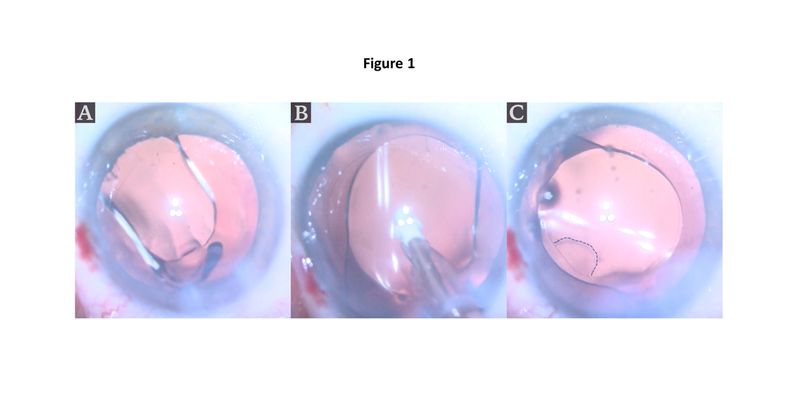Case report: IOL with PMMA haptic tips may cause intraoperative posterior capsule rupture
Phacoemulsification with IOL insertion is considered one of the most successful interventions in modern medicine. Among the first materials used for IOL composition was polymethyl methacrylate, or PMMA.
This rigid polymer afforded excellent biocompatibility and stability yet required large incisions for implantation. Over time, additional IOL materials have been introduced, including hydrophobic acrylic, which, being foldable, enables smaller incisions and more rapid visual rehabilitation.

Today, a variety of hydrophobic IOLs exist, embodying various optical and structural properties. These include the Hoya iSert IOL (Hoya Surgical Optics), recently relicensed as the IPure B1PC (BVI Medical) and the PreVue IOL (Bausch + Lomb). Distinguishing features of this lens include an aspheric optic, a preloaded platform and unique blue-tinted PMMA tips at the terminus of each haptic. Here, we describe a previously unreported intraoperative complication following in-the-bag insertion of this lens — posterior capsule rupture caused by the PMMA haptic tips.
In a recent otherwise uncomplicated case of phacoemulsification, this lens was delivered into the intact cohesive viscoelastic-filled capsular bag, where it promptly unfolded. Using a polymer-tipped irrigation/aspiration handpiece, viscoelastic was carefully removed from above and beneath the IOL. In the process, the lens rotated counterclockwise, causing one of the PMMA haptic tips to puncture the posterior capsule (Figure 1; Video). Thereafter, further efforts to remove viscoelastic ceased, the anterior chamber was reformed with saline, and the operation was concluded. The postoperative course was uncomplicated, and the IOL has remained well centered with good optical performance.
This case was instructive in the potential risks posed by PMMA haptic tips. Intracapsular placement of PMMA IOLs has a long history of safety and efficacy. Nevertheless, when used to coat the terminal haptic bulbs, this rigid material may produce an unfamiliar and somewhat hazardous unfolding procedure for surgeons otherwise experienced with hydrophobic IOL implantation, with the possibility of inadvertent posterior capsule rupture.
The variety of IOL designs is a great benefit to the ophthalmic profession and to the personal well-being of our patients. With these innovations, however, new risks and pitfalls may emerge, even with the reintroduction of “old” materials. To this end, we would recommend caution when implanting IOLs with PMMA haptic bulbs because their intraoperative behavior may, at times, prove surprising.
References:
- Gozum N, et al. Eye (Lond). 2003;doi:10.1038/sj.eye.6700290.
- Hollick EJ, et al. Ophthalmology. 1999;doi:10.1016/S0161-6420(99)90047-7.
- Panahi-Bazaz MR, et al. J Ophthalmic Vis Res. 2009;4(4):201-207.
For more information:
Jack S. Parker, MD, PhD, and John S. Parker, MD, can be reached at Parker Cornea, 3745 Corporate Woods Drive, Vestavia Hills, AL 35242; email: jack.parker@gmail.com; john.jsp26@gmail.com.
Yazen Shihab, BS, can be reached at the University of Alabama School of Medicine, Birmingham, Alabama; email: yshihab@uab.edu.
